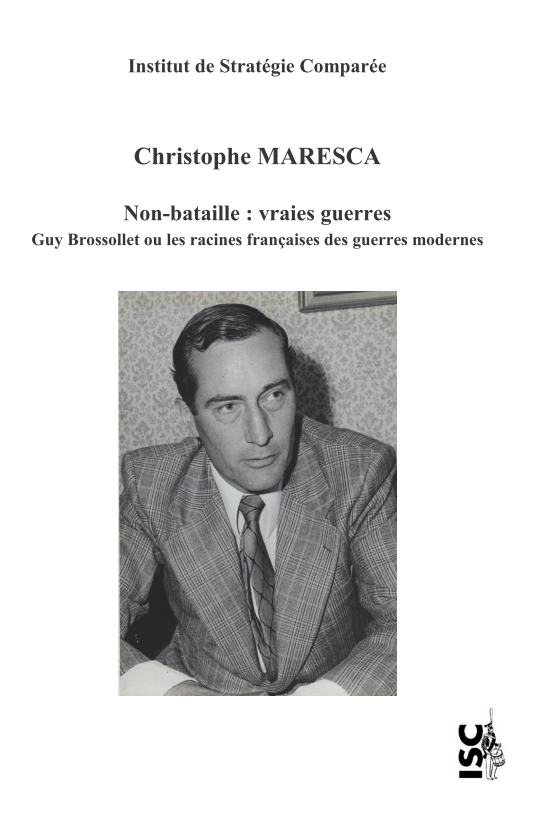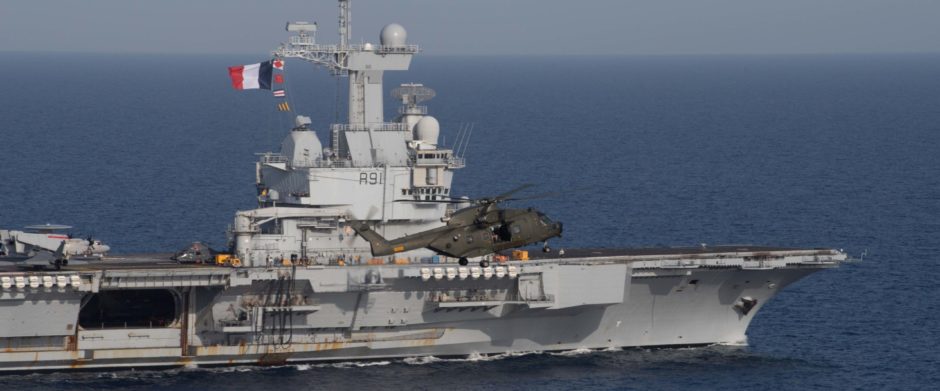- Addington Larry H., The Blitzkrieg Era and the German General Staff, 1865-1941, New Brunswick, Rutgers University Press, 1971.
- Afflerbach Holger et Stevenson David (eds.), An Improbable War: The Outbreak of World War I and European Political Culture before 1914, Berghan Books, New York, 2004.
- Aksakal Mustafa, The Ottoman Road to War in 1914. The Ottoman Empire and the First World War, Cambridge University Press, Cambridge, 2010.
- Alléhaut (général), Être prêts, Paris, Berger-Levrault, 1935.
- Alonso, Miguel, Kramer, Alan, Rodrigo, Javier (Eds.), Fascist Warfare, 1922–1945. Aggression, Occupation, Annihilation, Springer, Londres, 2019.
- Alpert Michael, The Republican Army in the Spanish Civil War, 1936–1939, Cambridge University Press, Cambridge, 2012.
- Amersfoort Herman et Piet H. Kamphuis (eds.), May 1940. The Battle for the Netherlands, Leiden, Brill, 2010.
- Amersfoort Herman et Wim Klinkert (eds.), Small Powers in the Age of Total War, 1900-1940, Leiden, Brill, 2011.
- Arbarétier Vincent, Rommel et la stratégie de l’Axe en Méditerrannée, Coll. « Campagnes et stratégies », Economica, Paris, 2009.
- Arbarétier Vincent, La conquête de la Norvège (1940), Coll. « Campagnes et stratégies », Economica, Paris, 2014.
- Ashworth, A.E. Trench Warfare 1914–1918. The Live and Let Live System, Springer, Londres, 1980.
- Aubin Nicolas, La course au Rhin (25 juillet-15 décembre 1944), Paris, Economica, 2018.
- Barjot Dominique (dir.), Deux guerres totales 1914-1918 1939-1945. La mobilisation de la nation, Coll. « Bibliothèque stratégique », Economica, Paris, 2012.
- Barnett Correlli, Le Sort des armes, étude sur le Haut Commandement pendant la première guerre mondiale, Paris, Presses de la Cité, 1964.
- Barton, Mary S., Counterterrorism Between the Wars. An International History, 1919-1937, Oxford, Oxford University Press, 2020.
- Barnett Correlli, The Audit of War. The Illusion on Reality of Britain as a Great Nation, Londres, Macmillan, 1986.
- Bauer Eddy (major), La Guerre des blindés. Les opérations de la seconde guerre mondiale sur les fronts d’Europe et d’Afrique, Lausanne, Payot, 1947.
- Beckett Ian (ed.), 1917: Beyond the Western Front, Leiden, Brill, 2009.
- Bedarida François, La Stratégie secrète de la drôle de guerre, Paris, Éditions du CNRS-Presses de la FNSP, 1979.
- Bernard Nicolas, La guerre germano-soviétique, Tallandier, Paris, 2013.
- Burguete Ricardo (général), La Cienca militar ante la guerra europea, Barcelone, Maucci, 1917.
- Boff Jonathan, Winning and Losing on the Western Front. The British Third Army and the Defeat of Germany in 1918, Cambridge University Press, Cambridge, 2014.
- Boggs Carl, Origins of the Warfare State. World War II and the Transformation of American Politics, Routledge, London, 2016.
- Bond Brian, British Military Policy between the Two World Wars, Oxford, The Clarendon Press, 1980.
- Bouvart (commandant), Les Leçons de la guerre, Paris, Pierre Masson, 1920.
- Brézet François-Emmanuel, Hitler et la mer, Perrin, Paris, 2019.
- Bru Alain, Évolution des matériels d’armements, 1939-1945, Paris-Caen, Économica-Mémorial, 1990.
- Beevor Antony, Stalingrad, Paris, Editions de Fallois, 1999.
- Burne Alfred H., Art of War on Land, Londres, Methuen, 1944.
- Cailleteau François, Gagner la Grande Guerre, Paris, Économica, 2008.
- Camon Hubert (général), La Motorisation de l’Armée et la manœuvre stratégique, Paris, Berger-Levrault, 1926.
- Campbell John P., Dieppe Revisited : A Documentary Investigation, Londres, Frank Cass, 1994.
- Capet Antoine, Montgomery. L’artiste des batailles, Perrin, Paris, 2014.
- Carlier Claude et Pedroncini Guy (dir.), La Bataille de Verdun, actes du colloque, Paris, Économica, Hautes Études militaires 2, 1997.
- Carlier Claude et Pedroncini Guy (dir.), 1916 L’Émergence des armes nouvelles, actes du colloque, Paris, Économica, Hautes Études militaires 4, 1997.
- Chauvineau (général), Une invasion est-elle encore possible ?, Paris, Berger-Levrault, 1939.
- Cecil Hugh et Liddle Peter H. (ed.), Facing Armageddon. The First World War Experienced, Londres, Leo Cooper, 1996.
- Clark Ian, La Chute de la Crète, Paris, Laffont, 1966.
- Clerc Louis, La guerre finno-soviétique (novembre 1939-mars 1940), Coll. « Campagnes et stratégies », Economica, Paris, 2015.
- Colloque franco-belge, Les Relations militaires franco-belges, Paris, Éditions du CNRS, 1968.
- Colloque franco-britannique, Les Relations franco-britanniques 1935-1939, Paris, Éditions du CNRS, 1975.
- Colloque franco-britannique, Français et Britanniques dans la drôle de guerre, Paris, Éditions du CNRS, 1979.
- Colloque international, La Guerre en Méditerranée (1939-1945), Paris, Éditions du CNRS, 1971.
- Corum James S., The Roots of Blitzkrieg : Hans von Seeckt and German Military Reforms, Lawrence, University Press of Kansas, 1992.
- Corum James S. (ed.), Rearming Germany, Leiden, Brill, 2011.
- Courcelle-Labrousse, Vincent et Marmié Nicolas, La guerre du Rif. Maroc, 1921-1926, Paris, Tallandier, 2018.
- Coutau-Bégarie Hervé et Huan Claude, Mers el-Kébir 1940. La rupture franco-britannique, Paris, Économica, Campagnes et stratégies, 1994.
- Coutau-Bégarie Hervé et Huan Claude, Dakar 1940. La bataille fratricide, Paris, Économica, Campagnes et stratégies, 2004.
- Cron Robin, The Battle of Kursk, New York, Barnes & Noble, 1993.
- D’Este Carlo, Histoire du débarquement, Perrin, Paris, 2013.
- Daille (général), Duffour (général), Hellot (général) et Tournès (général), Histoire de la guerre mondiale, Paris, Payot, 4 vol., 1936-1937.
- Debeney (général), La Guerre et les hommes. Réflexions d’après-guerre, Paris, Plon, 1937.
- Deist Wilhelm (ed.), The German Military in the Age of Total War, Warwickshire-Dover, Berg, 1985.
- Deist Wilhelm, “The Military Collapse of the German Empire : the Reality behind the Stab-in-the-Back Myth”, War in History, 1996-3.
- Delhez Jean-Claude, La bataille des frontières. Joffre attaque au centre, Coll. « Campagnes et stratégies », Economica, Paris, 2013.
- Denizot Alain, “L’attaque de la dernière chance : 11-12 juillet 1916”, Guerres mondiales et conflits contemporains, 182, 1996.
- Dijke Jacques van, “L’effondrement du front allemand en Normandie (25 juillet-21 août 1944)”, Revue historique des armées, 1996-3.
- Dennis Peter et Grey Jeffrey (Eds.), 1917: Tactics, Training and Technology, Australian Military History Publications, Canberra, 2007.
- Dockril Saki (ed.), From Pearl Harbor to Hiroshima : the Second World War in Asia and the Pacific 1941-1945, New York, St Martin’s Press, 1994.
- Dupuy Trevor N., avec Bongard David L. et Anderson Jr Richard C., Hitler’s Last Gamble. The Battle of the Bulge December 1944-january 1945, Shrewsbury, Airlife, 1994.
- Dutailly Henry, Les Problèmes de l’armée de terre française (1935-1939), Paris, Imprimerie nationale, 1980.
- Earle Edward Mead, “Political and Military Strategy for the United States”, Proceedings of the Academy of Political Science,
- Eksteins Modris, Rites of Spring. The Great War and the Birth of the Modern Age, Londres, Black Swan, 1990 (il existe une traduction française).
- Ellis Frank, Barbarossa 1941. Reframing Hitler’s Invasion of Stalin’s Soviet Empire, Lawrence, Kansas University Press, 2018.
- Favreau Jacques, La campagne de Syrie – La bataille de Damour juin-juillet 1941, Coll. « Campagnes et stratégies », Economica, Paris, 2013.
- Feldmann Daniel et Mas Cédric, Montgomery, « Guerres et guerriers », Economica, Paris, 2014.
- Fennell Jonathan, Combat and Morale in the North African Campaign. The Eighth Army and the Path to El Alamein, Cambridge University Press, Cambridge, 2014.
- Ferris John, Bosworth Richard, Maiolo Joseph, Geyer Michael, Tooze Adam (Eds.), The Cambridge History of the Second World War, 3 vols., Cambridge University Press, Cambridge, 2015.
- Fioravanzo (amiral), “Grande strategia”, Nuova Antologia, 1er juillet 1940.
- Fischer Fritz, Les Buts de guerre de l’Allemagne impériale, Paris, Éditions de Trévise, 1970.
- Fœrtsch Herman, The Art of Modern Warfare, New York, Veritas Press, 1940.
- Fox, Aimée, Learning to Fight. Military Innovation and the Change in the British Army, 1914-1918, Cambridge, Cambridge University Press, 2017.
- French David, British Strategy and War Aims 1914-1916, Londres, George Allen & Unwin, 1986.
- French David, The Strategy of the Lloyd George Coalition 1916-1918, Oxford, The Clarendon Press, 1995.
- Friedman Norbert, Fighting the Great War at Sea. Strategy, Tactics and Technology, Seaforth publishing, Barnsley, 2014.
- Frieser Karl-Heinz, Le Mythe de la guerre-éclair. La campagne de l’Ouest de 1940, Paris, Berlin, 2003.
- Gambiez F. (général) et Suire M. (colonel), Histoire de la première guerre mondiale, Paris, Fayard, 2 vol., 1968.
- Gaulle Charles De (colonel), Vers l’armée de métier, Paris, Berger-Levrault, 1934.
- Glantz David M., Stumbling Colossus. The Red Army on the Eve of World War, Lawrence, Kansas University Press, 1996.
- Glantz David M., The Battle for Leningrad, 1941-1944, Lawrence, Kansas University Press, 2002.
- Glantz David M., Colossus Reborn. The Red Army at War, 1941 – 1943, Lawrence, Kansas University Press, 2005.
- Glantz David M. et Jonathan M. House, When Titans Clashed. How the Red Army Stopped Hitler, Lawrence, Kansas University Press, 2015.
- Gooch John, Mussolini and his Generals. The Armed Forces and Fascist Foreign Policy, 1922–1940, University Press, Cambridge, 2007.
- Gooderson Ian, Air Power at the Battlefront. Allied Close Air Support in Europe 1943-45, Routledge, London, 1998.
- Goya Michel, La chair et l’acier: L’armée française et l’invention de la guerre moderne (1914–1918), Tallandier, Paris, 2004.
- Goya, Michel, Les vainqueurs. Comment la France a gagné la Grande Guerre, Paris, Tallandier, 2018.
- Gros Long Colonel, La Connaissance de la guerre. Essai de critique positive, Paris, Nouvelle Librairie nationale, 1922.
- Grummel Roland, La Yougoslavie dans la stratégie française de l’entre-deux-Guerres, Berne, Peter Lang, 1999.
- Grunden Walter E., Secret Weapons and World War II. Japan in the Shadow of Big Science, Lawrence, Kansas University Press, 2005.
- Guderian Heinz, Souvenirs d’un soldat, Paris, Plon, 1961.
- Guite Jangkhomang, Thongkholal Haokip (Eds.), The Anglo-Kuki War, 1917–1919. A Frontier Uprising against Imperialism during the First World War, London, Routledge, 2018.
- Gunzburg Jeffery A., Divided and Conquered. The French High Command and the Defeat of the West, 1940, Wesport-Londres, Greenwood Press, Contributions in Military History 18, 1979.
- Hill Alexander, The Red Army and the Second World War, Cambridge, Cambridge University Press, 2017.
- Hall, Brian N., Communications and British Operations on the Western Front, 1914–1918, University Press, Cambridge, 2017.
- Hargreaves Andrew, Patrick Rose and Matthew C. Ford (eds.), Allied Fighting Effectiveness in North Africa and Italy, 1942-1945, Leiden, Brill, 2014.
- Harris J. P., Douglas Haig and the First World War, Cambridge University Press, Cambridge, 2009.
- Hartmann Christian, Operation Barbarossa. Nazi Germany’s War in the East, 1941-1945, Oxford, Oxford University Press, 2018.
- Howard Michael, The Continental Commitment. The Dilemma of British Defence in the Era of the World Wars, Londres, Temple Smith, 1972.
- Hunt Barry et Preston Adrian (eds), War Aims and Strategic Policy in the Great War, Londres, Croom Helm, 1977.
- Jeffery Keith, Ireland and the Great War, Cambridge, Cambridge University Press, 2011.
- Johnson Hubert C., Breakthrough ! Tactics, Technology and the Search for Victory on the Western Front in World War I, Novato, Presidio Press, 1994.
- Jones Heather, Jennifer O’Brien et Christoph Schmidt-Supprian (eds.), Untold War. New Perspectives in First World War Studies, Leiden, Brill, 2008.
- Jorland Patrice, “Le Japon et la deuxième guerre mondiale”, Historiens et géographes, 344, juin-juillet 1994 (article de tout premier ordre).
- Judge Sean M. et Jonathan M. House, The Turn of the Tide in the Pacific War. Strategic Initiative, Intelligence, and Command, 1941-1943, Lawrence, Kansas University Press, 2018.
- Kaufmann J.E. et Kaufmann H.W., Hitler’s Blitzkrieg Campaigns. The Invasion and Defense of Western Europe 1939-1940, Conshohocken, Combined Books, 1993.
- Keegan John, La Deuxième guerre mondiale, Paris, Perrin, 1989.
- Keene Jennifer et Michael Neiberg (eds.), Finding Common Ground. New Directions in First World War Studies, Leiden, Brill, 2011.
- Kennedy Paul M., Stratégie et diplomatie 1870-1945, Paris, Économica, Bibliothèque stratégique, 1988 (recueil d’articles).
- Kessler Christian, Les kamikazés japonais dans la guerre du Pacifique (1944-1945), Paris, Economica, 2018.
- Kier Elizabeth, Imagining War: French and British Doctrine Between the Wars, Princeton, Princeton University Press, 1997.
- Kinnunen Tiina et Ville Kivimäki (eds.), Finland in World War II. History, Memory, Interpretations, Leiden, Brill, 2012.
- Kiszely John, Anatomy of a Campaign. The British Fiasco in Norway, 1940, University Press, Cambridge, 2017.
- Kitchen Martin, Rommel’s Desert War. Waging World War II in North Africa, 1941–1943, Cambridge University Press, Cambridge, 2009.
- Klinkert Wim, Defending Neutrality. The Netherlands prepares for War, 1900-1925, Leiden, Brill, 2013.
- Knapp Andrew, Les Français sous les bombes alliées, 1940-1945, Paris, Tallandier, 2017.
- Krumeich Gerd, “« Saigner la France » ? Mythes et réalité de la stratégie allemande de la bataille de Verdun”, Guerres mondiales et conflits contemporains, 1996.
- Labrousse Henri, L’océan indien dans la Seconde Guerre mondiale, Coll. « Hautes Études Maritimes », Economica, Paris, 2007.
- Laurent Boris, Les opérations germano-soviétiques dans le Caucase, 1942-1943, « Campagnes et stratégies », Economica, Paris, 2014.
- Le Moal Frédéric et Schiavon Max, Juin 1940. La guerre dans les Alpes. Enjeux et stratégies, Coll. « Campagnes et Stratégies », Economica, Paris, 2010.
- Le Naour Jean-Yves, 1919-1921. Sortir de la guerre, Paris, Perrin, 2020.
- Leese, P., Shell Shock. Traumatic Neurosis and the British Soldiers of the First World War, Springer, Londres, 2002.
- Leleu Jean-Luc, La Waffen SS. Soldats politiques en guerre, Paris, Perrin, 2008.
- Lemay Benoît, Erich von Manstein, Perrin, Paris, 2010 (1ère ed. 2006).
- Lemay Benoît, La guerre totale. Erich Luddendorff, « Tempus », Perrin, Paris, 2014.
- Lepick Olivier, La Grande guerre chimique 1914-1918, Paris, Presses universitaires de France, Histoires, 1998.
- Liddell Hart Basil H., La Guerre moderne, éditions de la nouvelle revue critique, 1935.
- Liddell Hart Basil H., Les généraux allemands parlent, Paris, Stock, 1949.
- Liddell Hart Basil H., Histoire de la seconde guerre mondiale, Paris, Fayard, 1976.
- Liddle Peter H. (ed.), Passchendaele in Perspective. The Third Battle of Ypres, Londres, Leo Cooper, 1997.
- Lopez Jean, Berlin. Les offensives géantes de l’armée rouge. Vistule-Oder-Elbe (12 janvier-9 mai 1945), Coll. « Campagnes et stratégies », Economica, Paris, 2010.
- Lopez Jean, Koursk. Les quarante jours qui ont ruiné la Wehrmacht (5 juillet-20 août 1943), 2ème Ed., Coll. « Campagnes et stratégies », Economica, Paris, 2011.
- Lopez Jean et Otkhmezuri Lasha, Joukov. L’homme qui a vaincu Hitler, Perrin, Paris, 2013.
- Lopez Jean, Opération Bagration. La revanche de Staline (été 1944), Coll. « Campagnes et stratégies », Economica, Paris, 2014.
- Lukacs John, La dernière guerre européenne. Septembre 1939-Décembre 1941, Paris, Fayard 1977.
- Macksey Kenneth, Military Errors of World War Two, Londres, Cassell, 2000.
- MacLeod Jenny et Pierre Purseigle (eds.), Uncovered Fields. Perspectives in First World War Studies, Leiden, Brill, 2004.
- Madelin Louis, La bataille de France. 21 mars – 11 novembre 1918, Perrin, Paris, 2018.
- Maiolo Joseph A., Cry Havoc: How The Arms Race Drove The World To War, 1931-1941, New York : Basic Books, 2011.
- Malbosc Guy, La bataille de l’Atlantique (1939-1945). La victoire logistique et celle du renseignement clé dans la victoire des armes, 2ème édition, Coll. « Campagnes et stratégies », Economica, Paris, 2011.
- Mannerheim (maréchal), mémoires, Paris, Plon, 1961.
- Manstein Erich von (maréchal), Victoires perdues, Paris, Plon, 1958.
- Marble Sanders, King of Battle: Artillery in World War I, Leiden, Brill, 2016.
- Margolin Jean-Louis, Violences et crimes du Japon en guerre 1937-1945, Paris, Hachette, Pluriel, 2007.
- Martin H. (commandant), “Les groupes d’armées allemands au cours de la guerre (1914-1918)”, Revue militaire française, XVIII, 1925.
- Masson Philippe, Une guerre totale 1939-1945. Stratégies, moyens, controverses, Paris, Tallandier, 1990.
- Masson Philippe, Histoire de l’armée allemande 1939-1945, Paris, Perrin, 1994.
- Matheny Michael R., Carrying the War to the Enemy: American Operational Art to 1945, The University of Oklahoma Press, Norman, 2011.
- Mawdsley Evan, The War for the Seas. A Maritime History of World War II, Yale University Press, New Haven, 2019.
- Mayer Émile, Comment on pouvait prévoir l’immobilisation des fronts dans la guerre moderne. L’évolution de l’art militaire, Paris-Nancy, Berger-Levrault, 1916.
- McKercher B.J.C. et Antoine Capet (Ed.), Winston Churchill. At War and Thinking of War before 1939, Routledge, Londres, 2020.
- Messenger Charles, The Blitzkrieg Story, New York, Scribner, 1976.
- Miksche F.O., Étude sur la tactique allemande de 1937 à 1943, Londres, 1944.
- Militärgeschichtliches Forschungsamt (dir.), Development Planning and Realization of Operational Conceptions in World Wars I and II, Hambourg-Berlin-Bonn, Mittler, 1989.
- Militärgeschichtliches Forschungsamt (dir.), Germany and the Second World War, Oxford, Oxford University Press, 1. Deist Wilhelm, Messerschmidt Manfred, Volkmann Hans-Erich et Wette Wolfram, The Build-up of German Aggression, 1990 ; 2. Maier Klaus A., Rohde Horst, Stegemann Bernd et Umbreit Hans, Germany’s Initial Conquests in Europe, 1991 ; 3. Schreiber Gerhard, Stegemann Bernd et Vogel Detlef, The Mediterranean, South-East Europe, and North Africa, 1939-1941 : From Italy’s Declaration of Non-belligerence to the Entry of the United States into the War, 1995 ; 4. Boog Horst, Förster Jürgen, Hoffmann Joachim, Klink Ernst, Müller Rolf-Dieter et Ueberschär Gerd R., The Attack of the Soviet Union, 1997.
- Miller Edward S., War Plan Orange. The US Strategy to Defeat Japan, 1897-1945, Annapolis, Naval Institute Press, 1991.
- Millett Allan R. et Murray Williamson (eds), Military Effectiveness, 3 vol., I. The First World War, The Interwar Period, III. The Second World War, Boston, George Allen & Unwin, 1988 (très important).
- Mosier John, Le mythe du blitzkrieg. Comment Hitler et les alliés se trompèrent sur les réalités stratégiques de la Seconde Guerre mondiale, Coll. « Stratégie et doctrine », Economica, Paris, 2014.
- Motte Martin et Thebault Frédéric (dir.), Guerre, idéologies, populations, 1911-1946, L’Harmattan, Paris, 2005.
- Moy Timothy, War Machines: Transforming Technologies in the US Military, 1920-1940, Texas A&M Press, Austin, 2001.
- Murray Williamson et Millett Allan R. (eds), Military Innovation in the Interwar Period, Cambridge, New York-Melbourne, Cambridge University Press, 1996.
- Murray, Williamson et Millett, Alan Redd (Ed.), A War to be Won. Fighting the Second World War, Harvard University Press, Harvard, 2009.
- Myers Michael, The Pacific War and Contingent Victory, University Press of Kansas, Lawrence, 2015.
- Nofi Albert A., The War Against Hitler. Military Strategy in the West, nlle éd. Conshohocken, Combined Books, 1995.
- Otkhmezuri Lasha et Lopez Jean, Grandeur et misère de l’armée rouge, « Tempus », Perrin, Paris, 2015.
- Paddock Troy, World War I and Propaganda, Leiden, Brill, 2012.
- Payson O’Brien Phillips, How the War Was Won. Air-Sea Power and Allied Victory in World War II, Cambridge University Press, Cambridge, 2015.
- Peattie Mark R., Sunburst: The Rise of Japanese Naval Air Power, 1909-1941, Naval Institute Press, Newport, 2007.
- Payne Stanley G., The Spanish Civil War, Cambridge, Cambridge University Press, 2012.
- Pedroncini Guy, Pétain, le soldat et la gloire, Paris, Perrin, 1991.
- Pedroncini Guy, Pétain, général en chef, Paris, Presses universitaires de France, 1974.
- Posen Barry R., The Sources of Military Doctrine. France, Britain and Germany between the World Wars, Ithaca, Cornell University Press, 1984.
- Purseigle Pierre (ed.), Warfare and Belligerence. Perspectives in First World War Studies Leiden, Brill, 2005.
- Reinhardt Klaus, The Turning Point. The Failure of Hitler’s Strategy in the Winter 1941-1942, Oxford-Providence, Berg, Studies in Military History 3, 1992.
- Ricalens Philippe et Poyer Jacques (Dir.), L’armistice de juin 1940. Faute ou nécessité ?, Coll. « Campagnes et stratégies », Economica, Paris, 2011.
- Rigoux Pierre, Les Dardanelles 1915 – une stratégie en échec, « Campagnes et Stratégies », Economica, Paris, 2013.
- Rinke Stefan, Latin America and the First World War, Cambridge University Press, Cambridge, 2016.
- Rocolle Pierre, La Guerre de 1940. 1. Les illusions. 2. La défaite, Paris, Armand Colin, 1990.
- Rommel (maréchal), La Guerre sans haine, Paris, Le livre contemporain, 1960.
- Ross Steven T. (ed.), Peacetime War Plans 1919-1935, New York, Garland, 2 vol., 1992.
- Roy Kaushik (ed.), The Indian Army in the Two World Wars, Leiden, Brill, 2012.
- Roy Kaushik, Sepoys against the Rising Sun. The Indian Army in the Far East and South-East Asia, 1941–1945, Leiden, Brill, 2016.
- Rutherford Jeff, Combat and Genocide on the Eastern Front. The German Infantry’s War, 1941–1944, Cambridge University Press, Cambridge, 2014.
- Sagan Scott D., “1914 Revisited. Allies, Offense and Instability”, International Security, XI‑2, automne 1986.
- Sander Gordon F., The Hundred Day Winter War. Finland’s Gallant Stand against the Soviet Army, Lawrence, Kansas University Press, 2013.
- Sarantakes Nicholas Evan, Allies against the Rising Sun. The United States, the British Nations, and the Defeat of Imperial Japan, Lawrence, Kansas University Press, 2009.
- Saint-Martin Gérard, L’Arme blindée française. I Mai-juin 1940, Paris, Économica, Campagnes et stratégies, 1998.
- Schiavon Max, L’Autriche-Hongrie dans la Première Guerre mondiale. La fin d’un empire, Coll. « Les Nations dans la Grande Guerre », Soteca, Paris, 2011.
- Schiavon Max, Le général Vauthier. Un officier visionnaire, un destin bouleversant, Editions Pierre de Taillac, Paris, 2013.
- Schiavon Max, La guerre du Rif. Un conflit colonial oublié (1925-1926), Pierre de Taihac, Paris, 2016.
- Schneider James L., “War Plan Rainbow 5”, Defense Analysis, 10-3, 1994.
- Seaton Albert, German Army 1933-1945, New York, St Martin’s Press, 1982.
- Sica Emanuele et Carrier Richard (eds.), Italy and the Second World War. Alternative Perspectives, Leiden, Brill, 2018.
- Snyder Jack, The Ideology of the Offensive. Military Decision Making and the Disasters of 1914, Ithaca, Cornell University Press, 1984.
- Soutou Georges-Henri, La Grande illusion. Quand la France perdait la paix, 1914-1920, Tallandier, Paris, 2015.
- Stahel David, Operation Barbarossa and Germany’s Defeat in the East, Cambridge University Press, Cambridge, 2009.
- Statiev Alexander, At War’s Summit. The Red Army and the Struggle for the Caucasus Mountains in World War II, Cambridge, Cambridge University Press, 2018.
- Stone David R., The Russian Army in the Great War. The Eastern Front, 1914-1917, Lawrence, Kansas University Press, 2015.
- Strachan Hew, The First World War, Londres, Simon & Schuster, 2003.
- Strohn Matthias, The German Army and the Defence of the Reich. Military Doctrine and the Conduct of the Defensive Battle 1918–1939, Cambridge University Press, Cambridge, 2016.
- Symonds Craig L., World War II at Sea. A Global History, Oxford, Oxford University Press, 2018.
- Taaffe Stephen R., MacArthur’s Jungle War. The 1944 New Guinea Campaign, Lawrence, Kansas University Press, 1998.
- Tepora Tuomas et Roselius Aapo (eds.), The Finnish Civil War 1918. History, Memory, Legacy, Leiden, Brill, 2014.
- Travers Tim, The Killing Ground : The British Army, the Western Front and the Emergence of Modern Warfare, 1900-1918, Londres, George Allen & Unwin, 1987.
- Travers Tim, How the War was Won : Command and Technology in the British Army on the Western Front, 1917-1918, Londres, Routledge, 1992.
- Van Evera Stephen, “The Cult of the Offensive and the Origins of the First World War”, International Security, IX‑1, été 1984.
- van Tuyll van Serooskerken Hubert, The Netherlands and World War I. Espionage, Diplomacy and Survival, Leiden, Brill, 2001.
- van Tuyll H.P., Small Countries in a Big Power World: The Belgian-Dutch Conflict at Versailles, 1919, Leiden, Brill, 2017.
- Vanwelkenhuyzen Jean, Pleins feux sur un désastre, Bruxelles, Éditions Racine, 1995 (la synthèse la plus solide, la plus réfléchie).
- Vanwelkenhuyzen Jean, “Miracle” à Dunkerque, Bruxelles, Éditions Racine, 1994 (définitif sur la question).
- Veranov Michael (ed), The Mammoth Book of the Third Reich at War, New York, Cassoll & Graf, 1997.
- Visconti-Prasca (général), La Guerre décisive, Paris, Berger-Levrault, 1935.
- Walker Michael M., The 1929 Sino-Soviet War. The War Nobody Knew, Lawrence, Kansas University Press, 2017.
- Weigley Russel F., Eisenhower’s Lieutenants. The Campaign of France and Germany 1944-1945, Bloomington, Indiana University Press, 1991.
- Wilcox Vanda (ed.), Italy in the Era of the Great War, Leiden, Brill, 2018.
- Winter Denis, Haig’s Command. A Reassessment, Londres, Viking, 1991.
- Winton Harold et Mets David (eds.), The Challenge of Change: Military Institutions and New Realities 1918-1941, University of Nebraska Press, Lincoln, 2000.
- Woodward David, The American Army and the First World War, Cambridge University Press, Cambridge, 2014.
- Yelton David K., Hitler’s Volkssturm. The Nazi Militia and the Fall of Germany, 1944-1945, Kansas University Press, 2002.
-
Défense et illustration de l'enseignement de la stratégie
-
* * *
-
Les chercheurs de l'ISC
-
* * *
-
Nos dernières publications
-
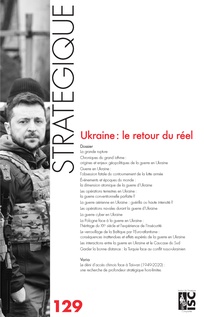
-
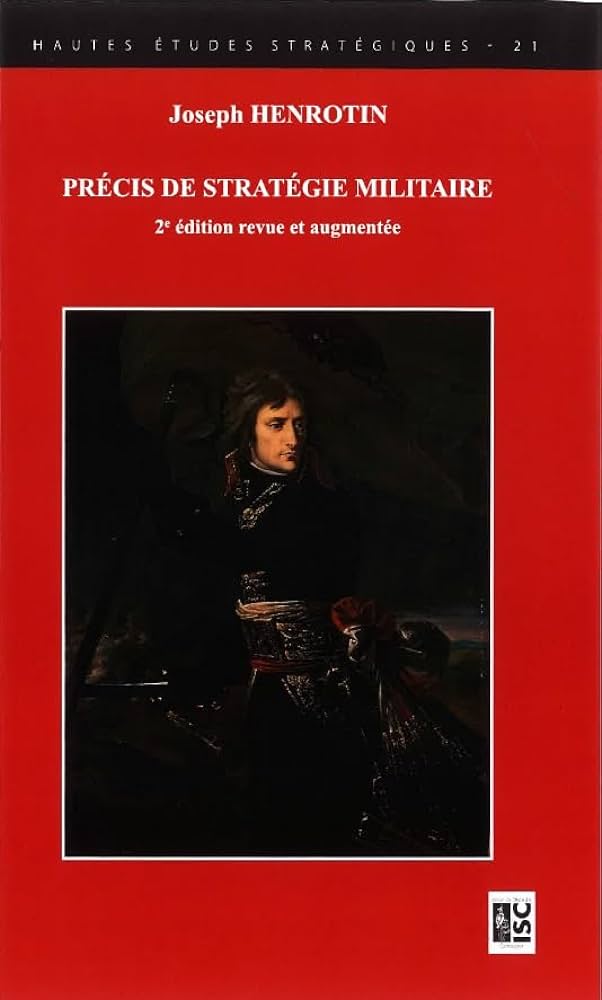
-
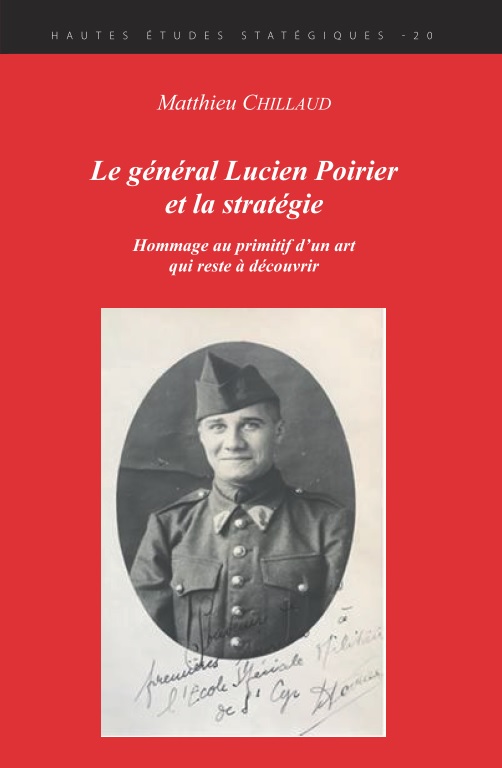
-
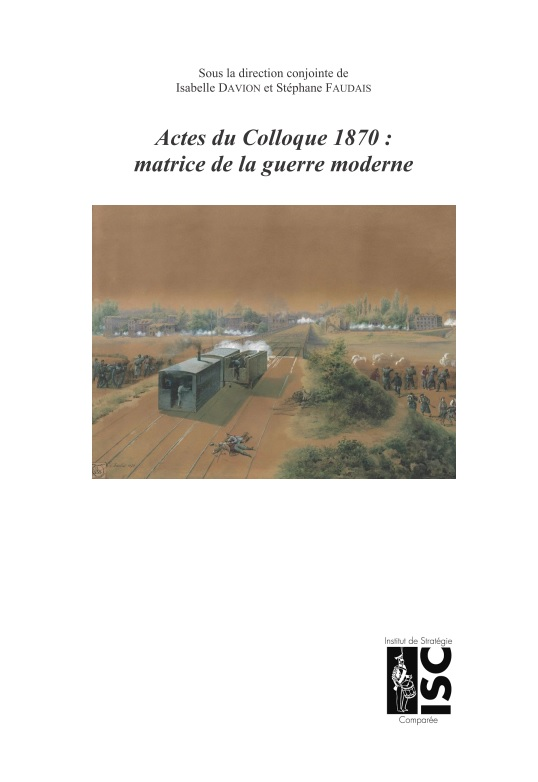
-
